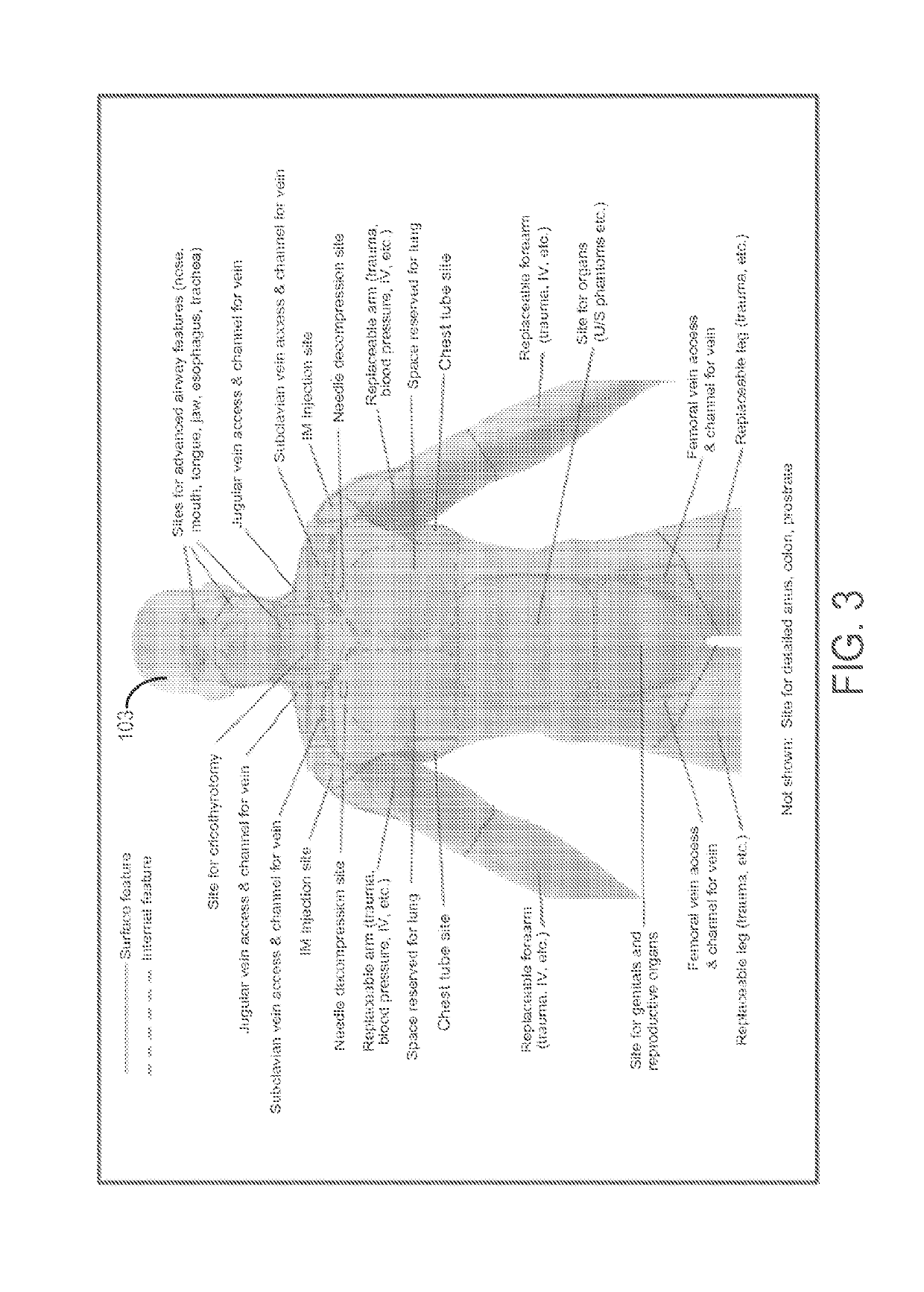System and method for improved medical simulator
a simulator and system technology, applied in the field of system and method for improving the simulator, can solve the problems of limiting the flexibility of implementation, increasing the cost, and difficult to obtain deliberate practice in medicine, so as to facilitate plug-and-play operation, reduce the complexity and time of implementation
- Summary
- Abstract
- Description
- Claims
- Application Information
AI Technical Summary
Benefits of technology
Problems solved by technology
Method used
Image
Examples
Embodiment Construction
[0074]Referring now to FIGS. 1 and 2, schematic views of a medical simulation system 100 in which a human manikin 103 may operate is provided. In general, the medical simulation system 100 includes the human manikin 103, which may be a modular manikin for example, into which hardware modules 107 can be inserted to provide incremental functionality to the manikin 103. The medical simulation system 100 also includes a computational device 101 and electronic storage 102 into which software modules 106 can be loaded. The hardware modules 106 and the software modules 107 can identify themselves to the computing device(s) in the system 100 which assesses and configures the system 100 accordingly. Assessment of the system 100 includes determining if the resources provided are aligned with the resources to be consumed. Assessment of the system 100 also includes determining if the required modules 107 are installed and whether the modules 107 meet the needs of the system 100. In addition, as...
PUM
 Login to View More
Login to View More Abstract
Description
Claims
Application Information
 Login to View More
Login to View More - R&D
- Intellectual Property
- Life Sciences
- Materials
- Tech Scout
- Unparalleled Data Quality
- Higher Quality Content
- 60% Fewer Hallucinations
Browse by: Latest US Patents, China's latest patents, Technical Efficacy Thesaurus, Application Domain, Technology Topic, Popular Technical Reports.
© 2025 PatSnap. All rights reserved.Legal|Privacy policy|Modern Slavery Act Transparency Statement|Sitemap|About US| Contact US: help@patsnap.com



